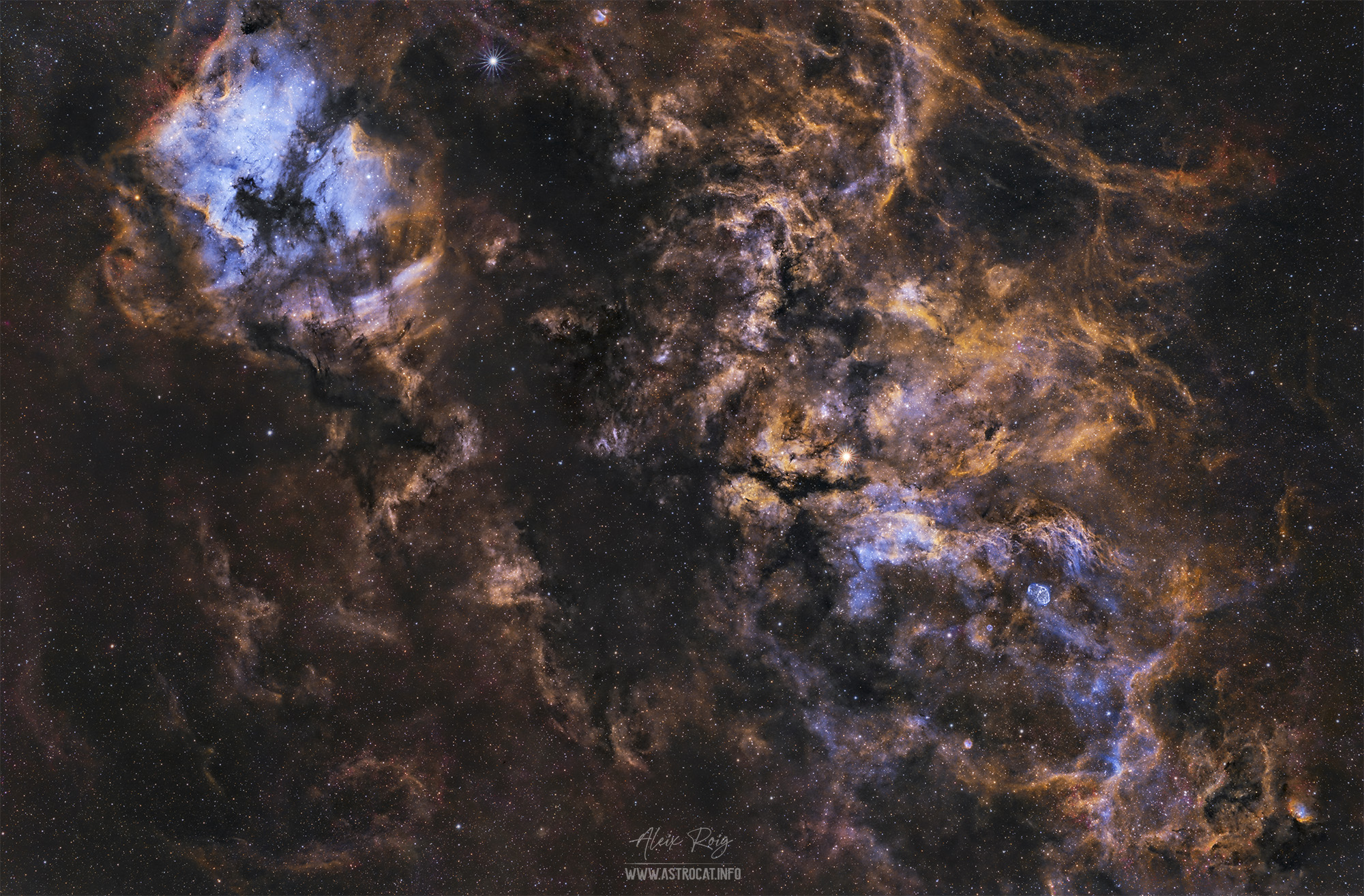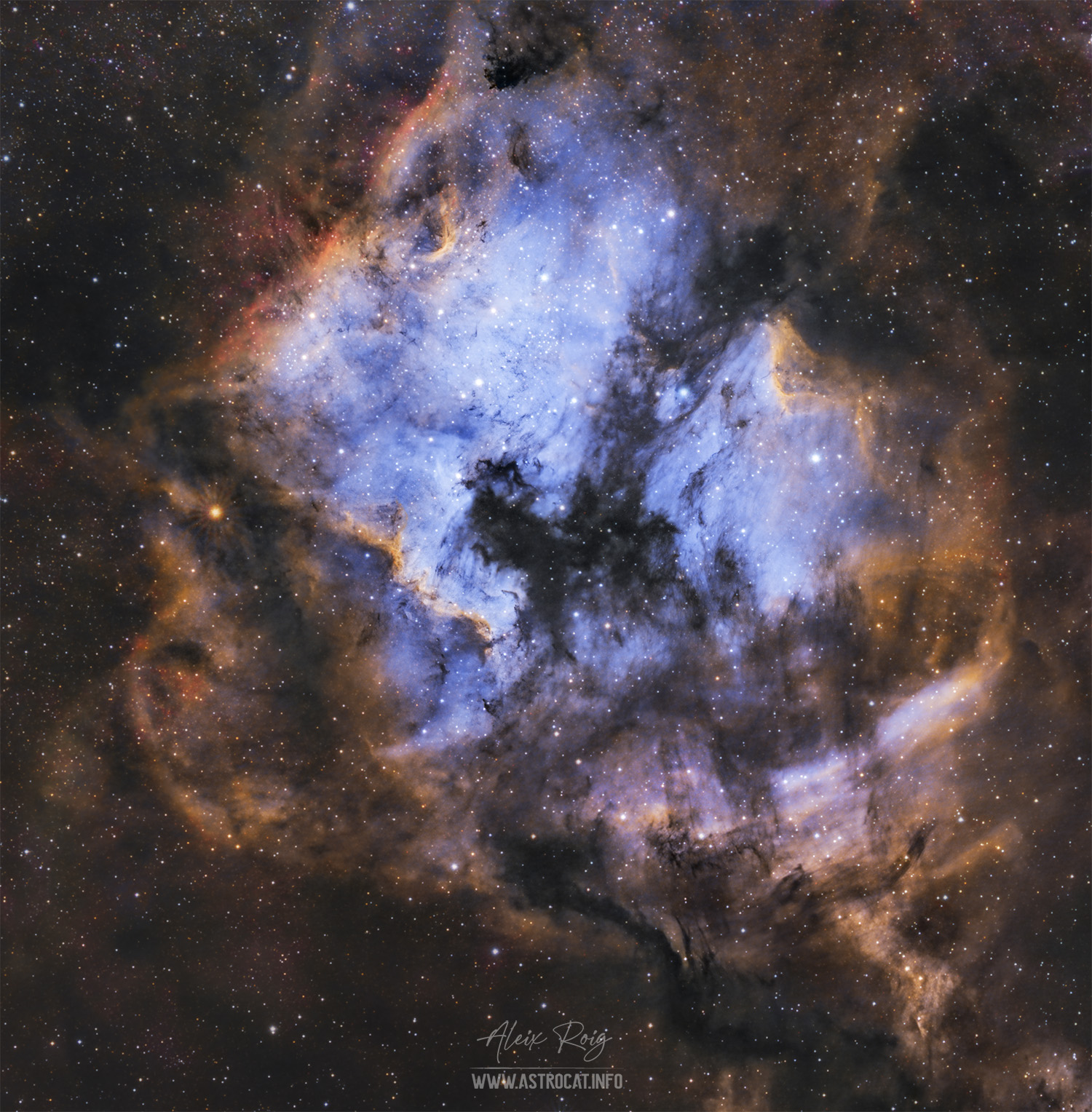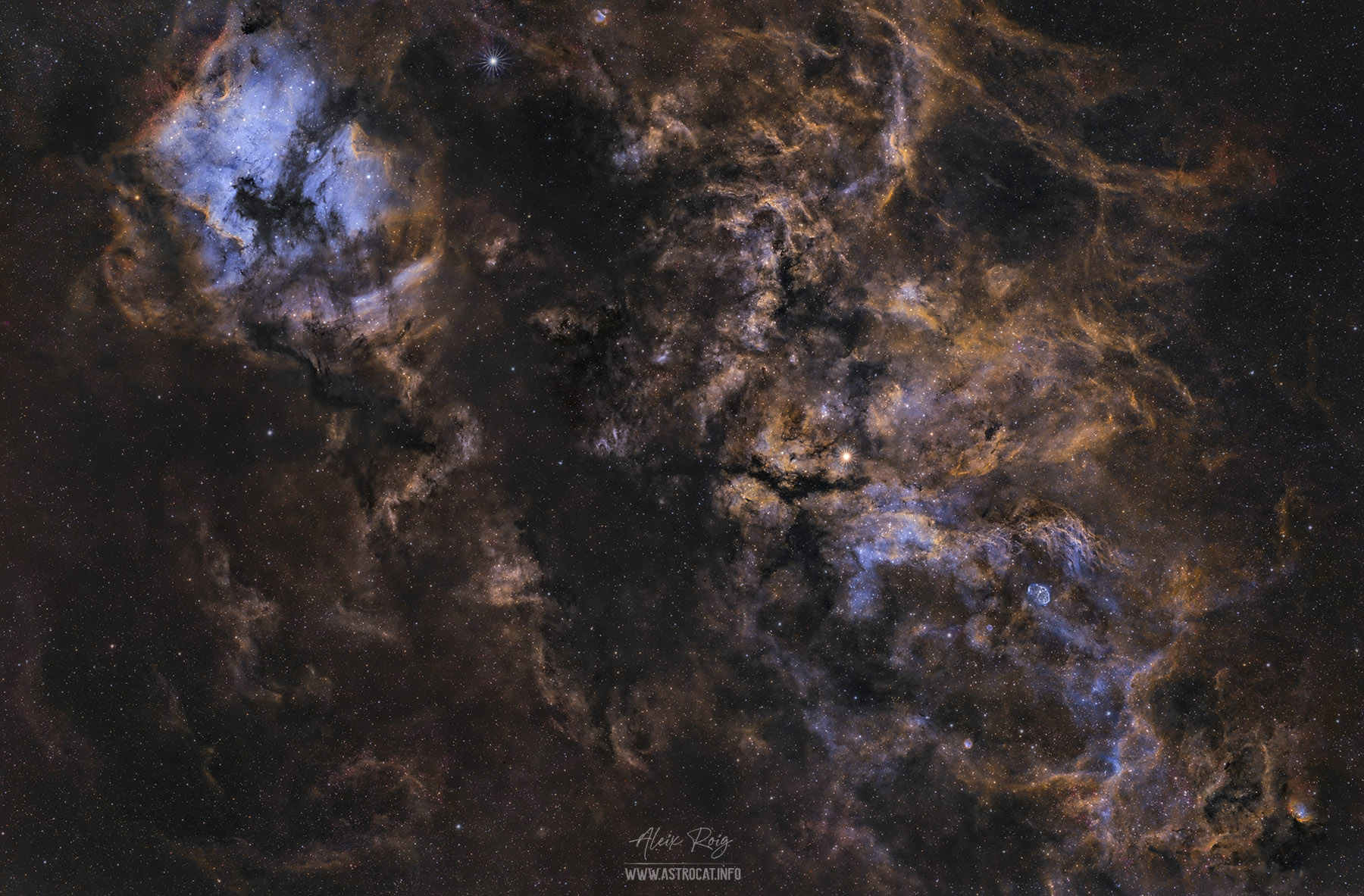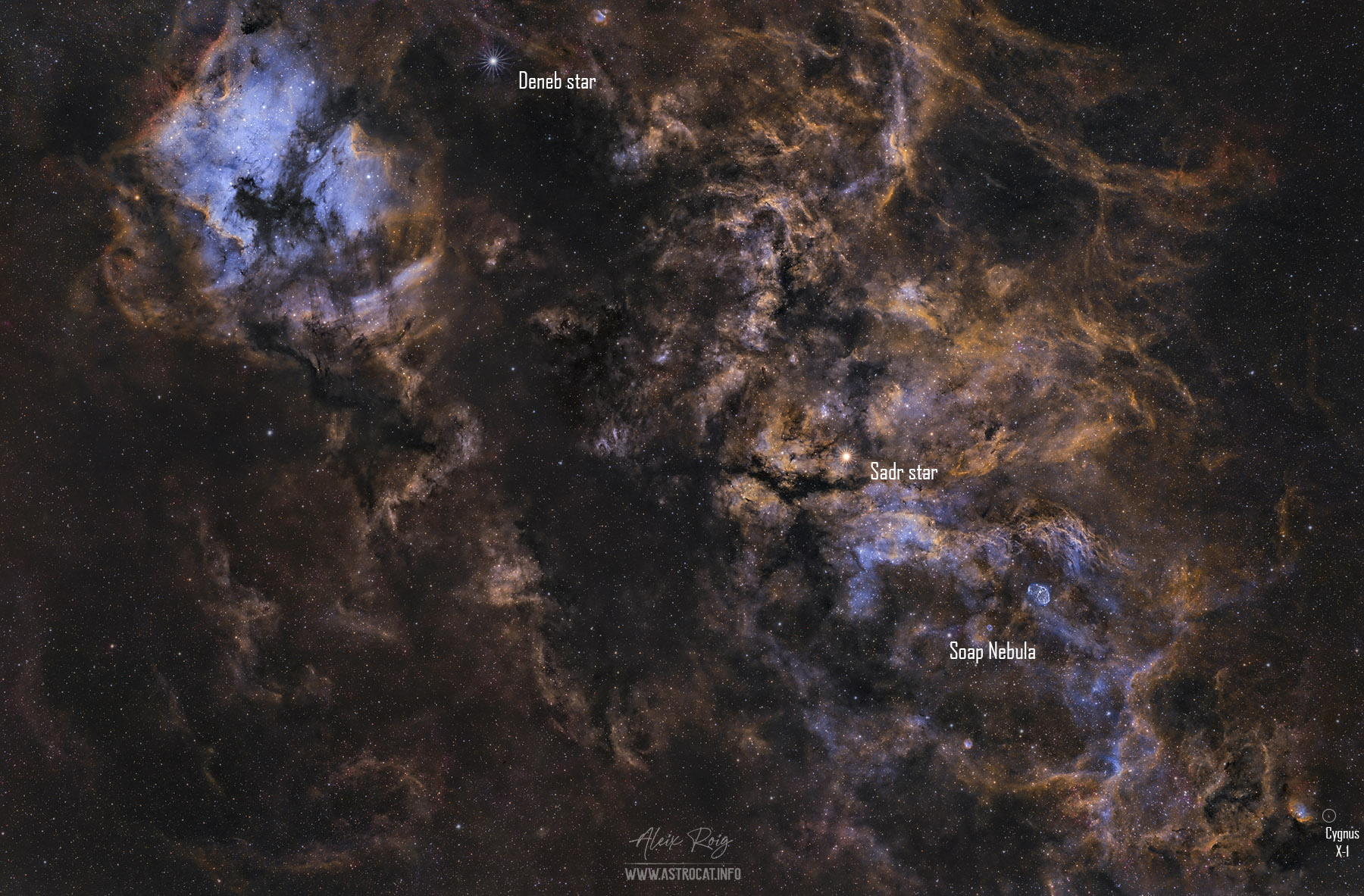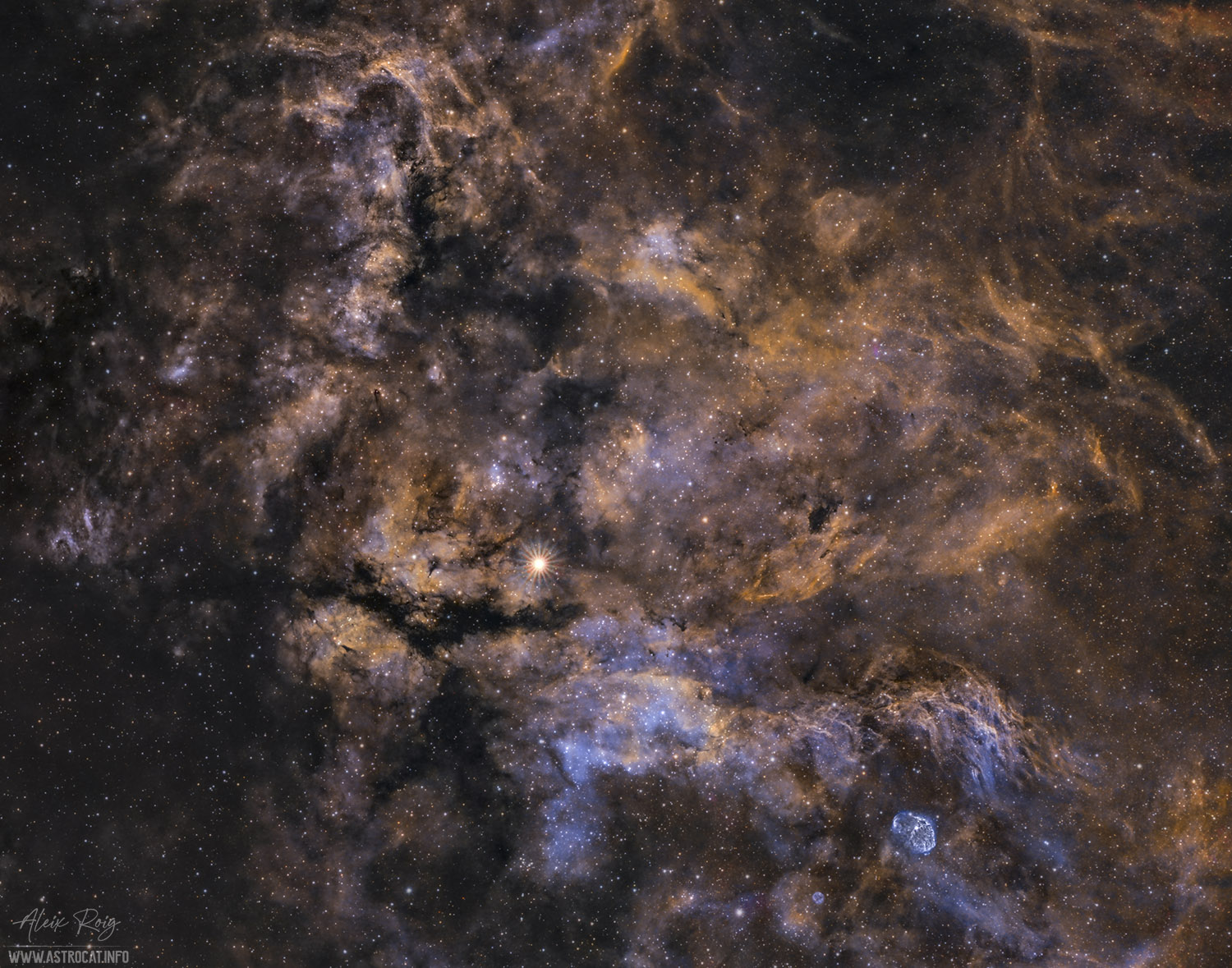Image Details
With the Takahashi FSQ85:
2017 image:
Hα: 40×600″ (Pelican Nebula, IC 5067)
All images at 0Gain -25ºC bin1
Calibrated with 50 flats, 50 darks, 50 bias
2018 images:
Hα: 98×600″ (2 pane mosaic of the North America Nebula, NGC 7000)
Hα: 93×600″ (Tulip Nebula, Sh2-101)
All images at 0Gain -25ºC bin1
Calibrated with 50 flats, 50 darks, 50 bias
2021 images:
Hα: 126×300″ (Crescent Nebula, NGC 8000)
Hα: 664×300″ (10 different fields of the Cygnus region)
All images at 120Gain -10ºC bin2
Calibrated with 50 flats, 50 darks, 50 darkflats
With the Sigma Art 85mm at f/4.0:
2021 images:
Hα: 156×600″
[OIII]: 134×600″
[SII]: 90×600″
RGB: (15,15,13)x30″All images at 100Gain -10ºC bin1
Calibrated with 30 flats, 30 darks, 30 darkflats
TOTAL exposure: 171h15′
Average darkness: 20.90 mag/arcsec2
Image resolution: 1.74”/pixel ASI1600MM + FSQ85
Image resolution: 2.12”/pixel
ASI294MM + FSQ85
Image resolution: 9.12”/pixel
ASI2600MM + Sigma Art 85mm
Equipment
Telescopes:
Takahashi FSQ85 & Sigma Art 85mm 1.4 (stopped at 4.0)
Mount:
Mesu200 mount
Cameras:
ZWO’s ASI1600MM Pro, ASI294MM Pro and ASI 2600MM Pro
Guiding:
OAG: ASI174MC with ZWO OAG
Parallel guiding with ASI120MM and ZWO guidescope, for the Sigma Art 85mm images and the Cygnus details captured with the FSQ85 in 2021
Filters:
FSQ85 with EFW 31mm 8pos:
Baader Hα 7nm
Sigma Art 85mm with EFW 36mm 7pos:
Antlia 3nm Pro Hα, and [OIII] + [SII] Baader 6.5nm CMOS new filters, RGB Astrodon E-Series.
Software
SGP, PHD2, APP, PIX, LR, PS, TPZ.
Aleix Roig, September 2021.
Prades (Tarragona, Catalonia – Spain).
Full HD view: https://www.astrobin.com/h808fj/
This work has been selected as a top pick image on Astrobin: https://www.astrobin.com/h808fj/

